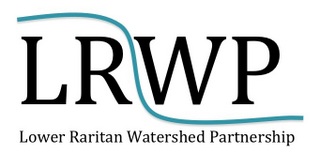Agnotology, or what don’t we know about what we don’t know?
By LRWP Board President Heather Fenyk
We have learned a lot about ignorance in the last several years, enough in fact for ignorance to now be the focus of its own research field called “agnotology.” The basic idea of agnotology is that ignorance is not simply the absence of knowledge, but something that has been itself historically constituted.

Mark Ruffalo’s 2019 film Dark Waters – a study of how DuPont and the US Environmental Protection Agency perpetuated ignorance about the harms related to Perfluorooctanoic acid or PFOAs and the presence of PFOAs in the lands and waters of West Virginia – is a great example of agnotology research. Also on the shelf of agnotology studies is The Guardian’s examination of the case of Flint, Michigan where, for at least a year and a half after hundreds of public complaints about “foul smelling drinking water as dark as coffee,” local politicians suppressed environmental and public health information.
We know from both these cases – and a seemingly endless set of additional examples including mounting climate crises around the world – that ignorance has major destructive and devastating consequences.
The core questions that agnotology asks are: How has ignorance been historically constituted? And how (and why) have we allowed ignorance to be perpetuated?
Applying this line of thinking to environmental assaults, we need to ask: how are ordinary people at times complicit in perpetuating the ignorance that wreaks environmental harm and injustices?
One way to start to understand our construction of ignorance is to examine the perspectives we bring to consider environmental harm and injustice in the first place. Take the two different starting points of the Precautionary Principle and Risk Assessment.
Precautionary Principle
In 1992 I interned with the United Nations Association in preparation for the first Earth Summit in Rio de Janeiro and helped develop a compendium of documents on global approaches to addressing environmental concerns. One such approach was the Precautionary Principle. The Precautionary Principle suggests that environmental policy involve anticipating harm and taking appropriate precautions. That is, possible harms are considered pre-emptively as part of development of any new policy. The precautionary principle has four central components: taking preventive action in the face of uncertainty; shifting the burden of proof to the proponents of an activity; exploring a wide range of alternatives to possibly harmful actions; and increasing public participation in decision making. The Precautionary Principle guides policy making in many countries, and is the foundation of the strongest and most comprehensive US federal environmental protection programs including the National Environmental Policy Act, the Clean Air Act, the Toxic Substances Control Act, the Endangered Species Act and the Clean Water Act.
Risk Assessment
For the last several decades, the Precautionary Principle has been superseded by an alternative approach to policy and decision making called “risk assessment.” With respect to environmental hazards, risk assessment seeks to balance pollution against profit and economic growth. Assessments of risk are carried out by regulatory agencies responsible for protecting environmental and human health, and these entities set pollutant limits and site-specific assessments. Industry is then responsible for complying with legislation and site-specific decisions. Risk assessment is the default approach for oil companies and other climate deniers. Risk assessment was the default approach for DuPont, the EPA and Flint. As our mounting climate concerns, the Dark Waters film, and the Flint water crisis make clear, the “risk assessment” approach has failed us.
Agnotology pushes us to see how our ignorance is socially constructed. That is, do we consider potential environmental harm and injustice as something we must actively plan to avoid based on specific societal goals of environmental well-being and justice (Precautionary Principle)? Or do we instead choose to consider environmental harm and injustice in the context of unknown future scenarios and risk calculations (Risk Assessment)?
Of course the Precautionary Principle and Risk Assessment are not the only approaches to bring to these considerations. Communities and societies around the world are wrestling with hybrid or other distinct approaches to reduce harms. The point is however, that if we hope to prevent future disasters in places like West Virginia and Flint, if we are to take action to avoid contributing to climate impacts, we need to think harder about how we know what we know about the impacts of our decisions to cause environmental harm and injustice. Making decisions while reflecting on them from an agnotological perspective – that is thinking about what we don’t know and how and why we don’t know it – is a good place to start.
